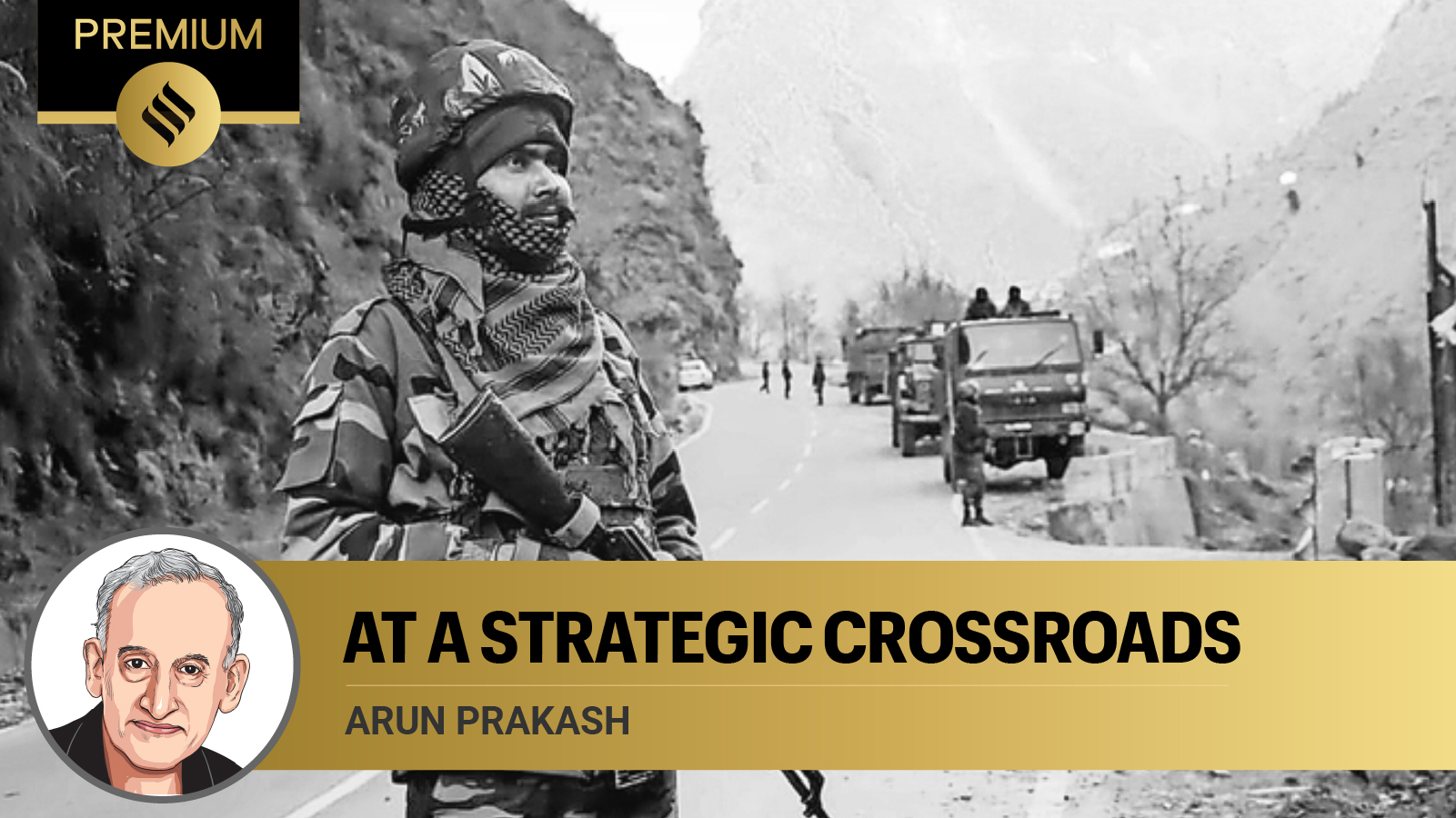Even as the 31st meeting of the diplomatic Working Mechanism on India-China Border Affairs concluded infructuously in end-August, our gallant jawans prepare for yet another winter in eyeball-to-eyeball confrontation with the Chinese PLA on frigid Himalayan heights. While the man on the street believes that by significant army redeployment, we have been able to checkmate China’s nefarious designs, Beijing — playing its own deceitful game — has been busy fortifying military positions in Ladakh and creating “border defence” villages across the Arunachal border.
Apart from propping up “iron brother” Pakistan economically and militarily to function as its effective South-Asian catspaw, China launched multiple other enterprises, aimed at undermining India’s position in the Indian Ocean Region. Schemes like the Belt and Road Initiative and Maritime Silk Road touted by Beijing as geo-economic initiatives served to arouse fears of “strategic encirclement” in India. While these fears were not unfounded, straws in the wind were, regrettably, ignored.
The Maldives had, as far back as 2012, cancelled a major airport modernisation contract with an Indian firm in favour of a Chinese company. Over the next decade, the “India First” spirit in Male steadily transmuted into a vociferous “India Out” campaign that brought current President Mohamed Muizzu to power. Similarly, in August, it was an egregious misreading of popular Bangladeshi sentiment that saw the fall of PM Sheikh Hasina’s India-friendly regime, catching New Delhi by surprise. Today, our eastern neighbour teeters between rule by theocratic and anarchic forces.
These events, juxtaposed with India’s prickly relationships with Nepal and Sri Lanka, raise two pertinent questions about the reasons for this loss of influence in our neighbourhood. One, why is India, despite its self-image of a sagacious and benign “Vishwaguru/ Vishwamitra”, still perceived as a “big brother/bully” by its neighbours? Two, are we underestimating the adverse impact in neighbouring capitals of divisive domestic politics and unchecked provocative utterances, both aimed at swaying the Indian electorate?
A stable and cooperative neighbourhood is indispensable for India to realise what many see as its “manifest destiny” of achieving great-power status. The outlines of a Viksit Bharat are already visible. The world’s most populous nation and a nuclear-armed military power, India is poised to become among the largest economies by 2047. A technological leap could turn it into a manufacturing powerhouse. Hopefully, by 2047, prudent economic management will have overcome the challenges of mass poverty and jobless growth, while improving healthcare and education.
This rosy picture, however, assumes that the ship of state is being manoeuvered with adroit statecraft and strategic wisdom through security minefields. Statecraft is the art of governing and managing a state using a toolbox of political, economic, military, and diplomatic instruments to safeguard national interests. At the core of statecraft lies the concept of national security — a nation’s ability to protect itself from internal and external threats impinging on the state’s integrity and survival.
Modern statecraft is predicated on comprehensive strategic agendas that serve as roadmaps for diplomats, soldiers and economists. Succinct strategies, preferably committed to writing, enable the evolution of contingency plans, allocation of resources and implementation of responses to emerging threats while advancing national objectives. The capacity to anticipate change and adapt strategies is paramount. For instance, novel security challenges such as hybrid, cyber, and low-intensity, terrorist warfare necessitate innovative approaches leveraging technologies like AI, robotics and unmanned/space-based systems.
India’s nuclear-armed neighbours, China and Pakistan, harbour territorial ambitions and have been repeatedly instigating provocations that divert national resources from developmental priorities. Despite claims to a rich heritage of “strategic culture”, India’s statecraft and military posture have thus far failed to deter these adversaries from seeking their revanchist goals. This “deterrence failure” can be attributed to the absence of a coherent strategy as well as a dearth of resolute statecraft. No ambiguity should exist in the minds of decision-makers that the onus of responsibility for national security and strategic decision-making rests on the politician’s shoulders, and must receive priority.
As our “strategic elite” grapples with the complexities of our security environment, three areas of serious concern deserve early attention. First, even as the spectre of Chinese military and technological dominance looms large, a far greater, economic and strategic vulnerability lies hidden in our ballooning trade deficit (currently, $85 billion). India’s growing dependence on vital imports of electronics, machinery, pharmaceuticals, and rare-earths is significantly curtailing its strategic room for manoeuvre vis-à-vis China.
Second, our continuing reliance on defence imports is a serious constraint on our cherished “strategic autonomy” as well as military capabilities. While Russia and Ukraine have been long-standing suppliers of aircraft, warships, submarines, tanks and artillery, Israel has become a source of military-electronics and guided weapons. All three are embroiled in serious conflicts and must not remain the fulcrum of our national defence. Initiatives like Atmanirbharta, though highly laudable, involve significant gestational delays and we must forge partnerships with like-minded nations to establish alternative supply chains.
Third, in the rarely mentioned domain of nuclear deterrence, both our adversaries have gained qualitative and quantitative advantages. China has enhanced the numbers, yield and accuracy of its arsenal and Pakistan’s claims have gone from “credible minimum deterrence” to “full spectrum deterrence”. If India intends to stand by the tenets of its 2003 nuclear doctrine, it must strategise to stand up to possible nuclear blackmail by neighbours — with threats ranging from Pakistan’s sub-kiloton tactical weapons to China’s megaton yield multi-warhead missiles.
Strategic alliances are an important tool of statecraft, which can significantly reinforce national security. India needs insurance against hegemony and domination to create space in which to nurture its economy and bridge technology gaps while boosting its military muscle. As it prepares to fight its own battles, India needs to seek external balancing. If realpolitik so demands, it must break old shibboleths and strike new partnerships – keeping national interest supreme.
The writer is a former chief of naval staff



